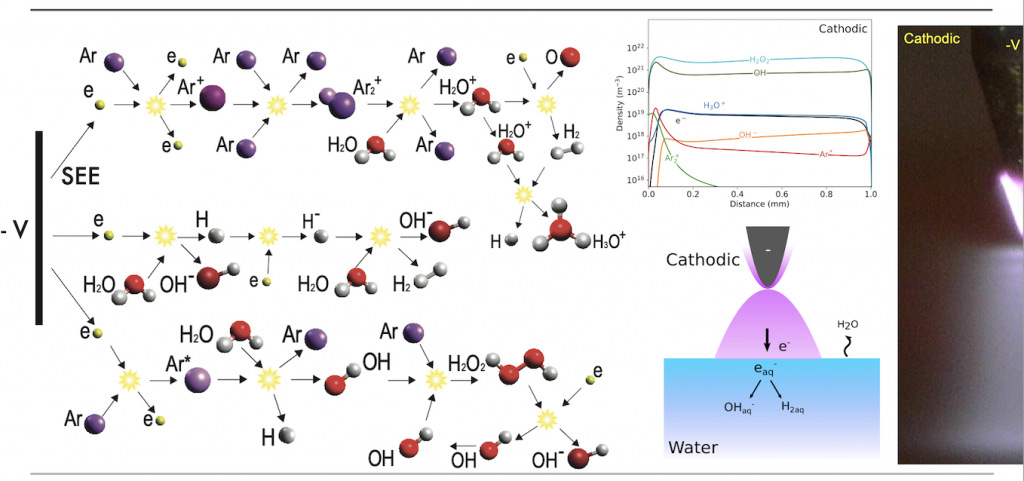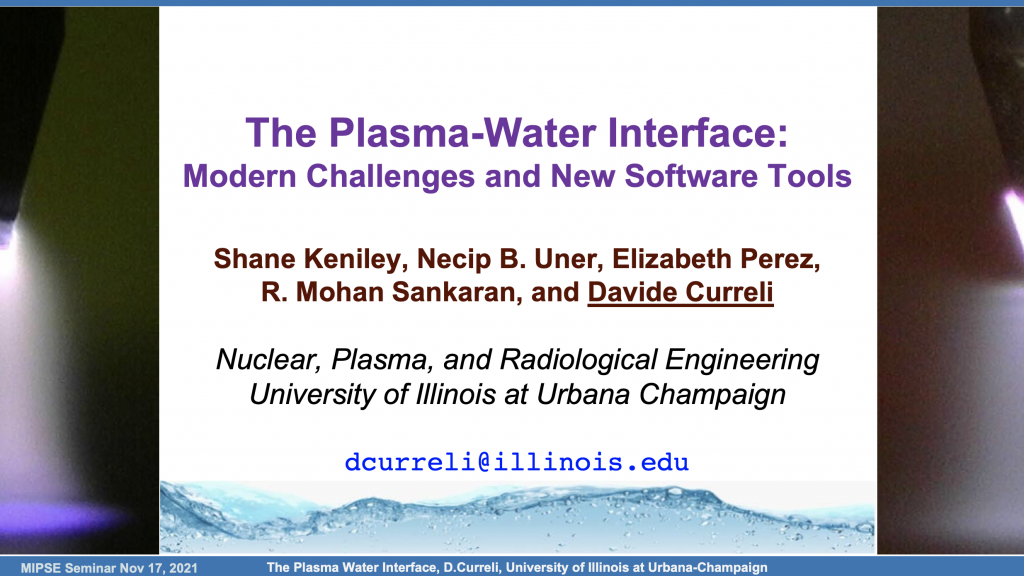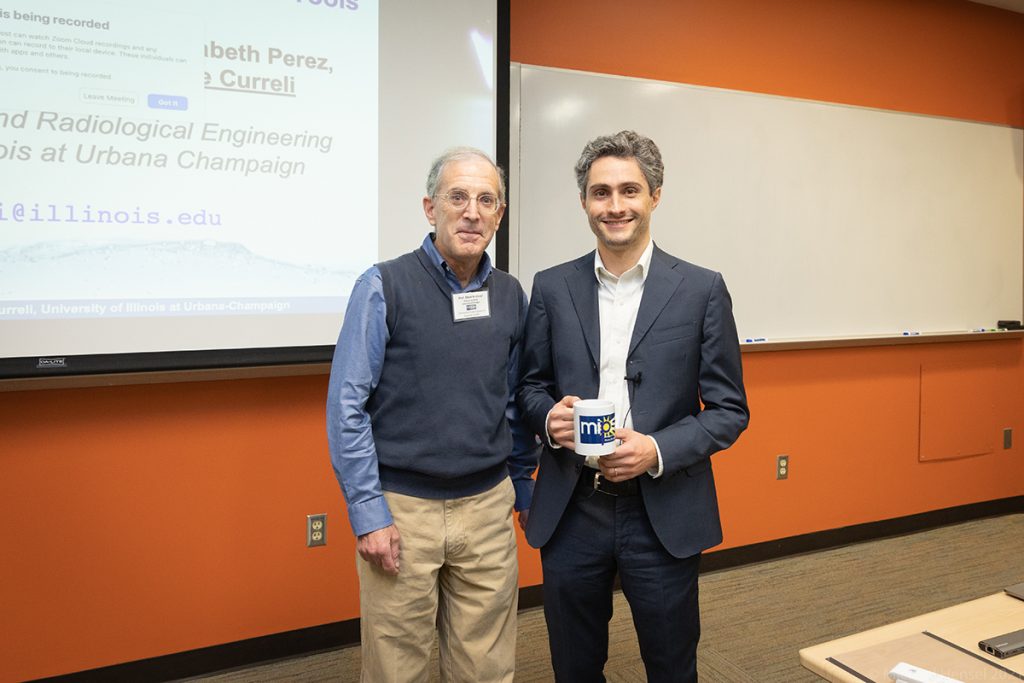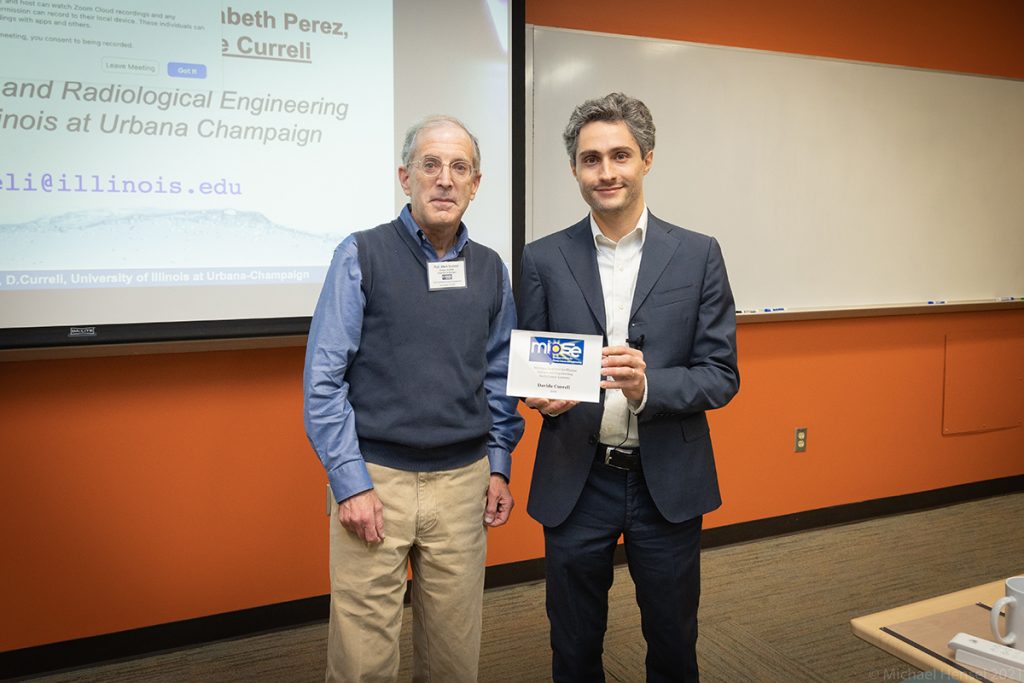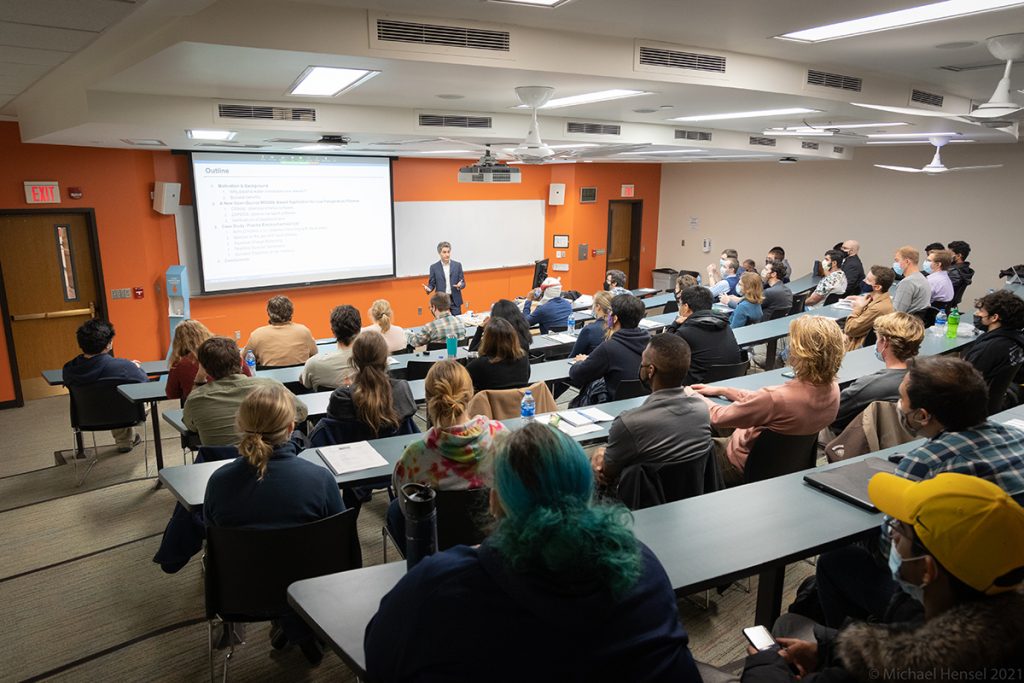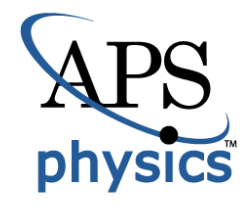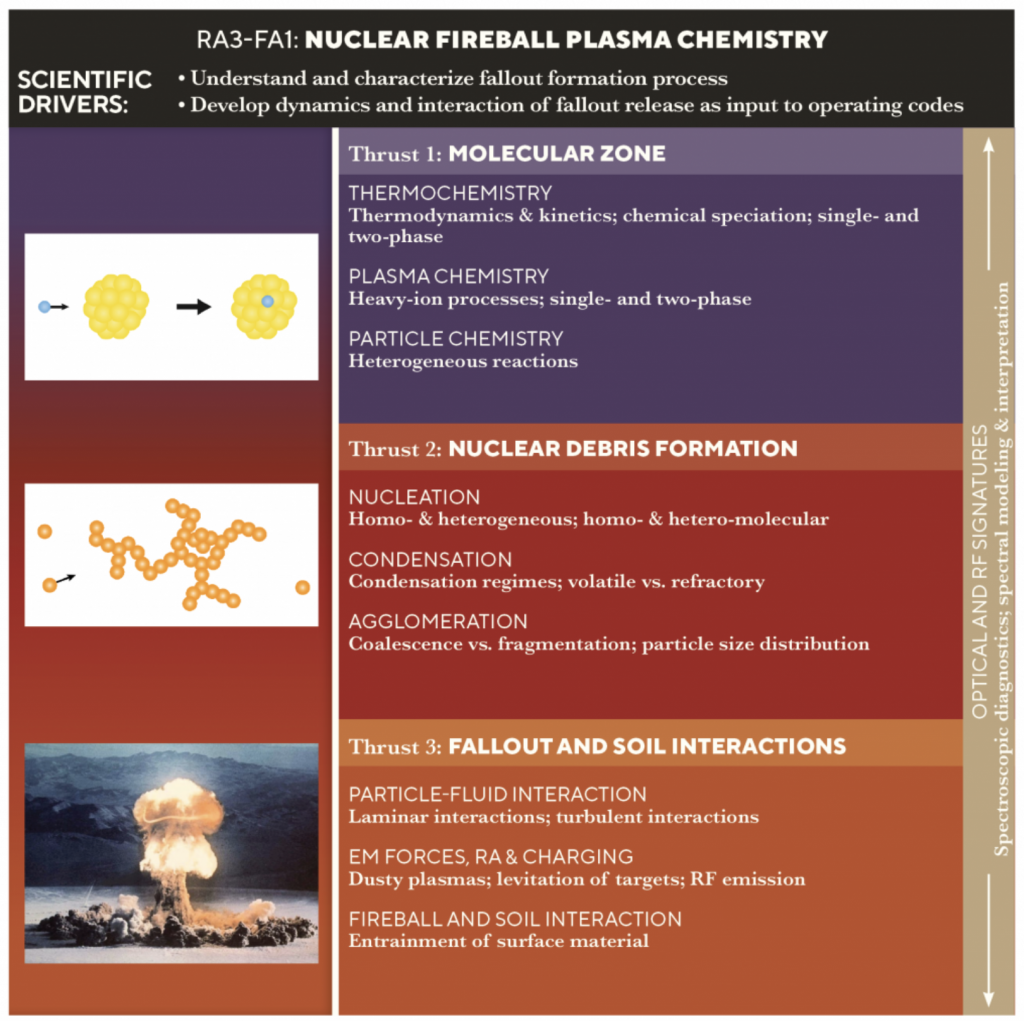Moutaz Elias, Ph.D. Candidate
Dr. Davide Curreli, Director of Research
August 10, 2021 10am-12pm
Kinetic Characterization of Enhanced Impurity Sputtering Due to Ion Cyclotron Radio-Frequency Heating

ABSTRACT: ICRH devices are a cornerstone in the auxiliary heating requirement of future fusion devices as they are the most advanced and cost-effective option to heat the plasma. However, RF sheaths have been a major concern accompanying the use of ICRH systems. The presence of RF sheaths has been experimentally and theoretically linked to the enhancement of the impurity flux sputtered from the Plasma Facing Components. It is a pivotal task to minimize the impurity emission from the PFC of the ICRH system. Several mitigation strategies have been developed and tested on smaller scale devices experimentally. Previous attempts to model RF sheaths and PMI are limited to electromagnetic simulation and at best a fluid description of the plasma without any PMI simulations. RF sheaths require a detailed kinetic ion simulation that captures the ion dynamics in order to provide an accurate description of the IEAD at the PFC, particularly a Particle-In-Cell simulation would be advantageous. Using Maxwell-Boltzmann electrons would allow to overcome some of the limitations connected to the fast electron physics, but in order to avoid spurious electrostatic oscillations, it would require to enforce global charge conservation for transient and RF sheath plasma simulations. In this work we developed a new charge conservation scheme enabling the treatment of RF sheaths, and other type of transients, in hybrid Particle-in- Cell codes having kinetic ions and Maxwell-Boltzmann electrons. We report numerical tests on magnetized Radio-Frequency plasma sheath designed to test the stability and ability of the scheme to capture important RF sheath phenomena. An extensive benchmarking comparison of time-averaged and time dependent profiles with fluid codes is also reported. The developed hPIC model is used to analyze the dependence of the kinetic IEAD impacting on the RF antenna at various RF sheath parameters. Furthermore, a simulation case representing the latest JET campaign was analyzed. We found that in typical tokamak conditions of grazing magnetic field incidence, the IEAD of the ions impacting on the surface of the RF actuator exhibits a “phase-space cusp”, which can be explained as an effect due to finite ion Larmor radius.
In order to quantify material emission consequent to ion bombardment, the hPIC framework was interfaced to the RustBCA sputtering code. RustBCA is a previously-developed binary-collision-approximation code, which can be used to simulate material sputtering in time resolved conditions. Time resolved coupling allowed us to inspect changes in sputtering yield during one RF cycle. We found that the yield has a highly non-linear evolution during the RF cycle, which is a consequence of the exponential dependence of sputtering vs. energy across the sputtering threshold.
Finally, we performed a preliminary validation using experimental data taken at the RF limiter on the WEST tokamak at CEA, France, with the goal of comparing the results from hPIC-RustBCA against experimental measurements. In order to allow the comparison against OES (Optical Emission Spectroscopy) acquisitions, we converted the sputtered fluxes calculated by the code into absolute spectral radiance. We found reasonable agreement between the calculated values and the experimental measurements of the tungsten W I optical line emission at 400.9 nm, representative of the amount of sputtered tungsten. The multiple sources of uncertainties affecting the validation have been discussed, namely the high variability of the inverse photon efficiency S/XB, the actual impurity composition of the plasma (O, C, F, Cu, etc.), and the effect of higher charge states (O+, O2+, O3+, …, O8+). A systematic analysis of the different sources of uncertainty has been reported.
NPRE Graduate Student Spotlight: Moutaz Elias
See where Moutaz Elias is now: LinkedIn
 A new Special Issue of the journal Nuclear Materials and Energy, Elsevier, on the topic of Modeling and Experimental Validation of Plasma Material Interactions is now accepting papers. The scope of this special issue focuses on both modeling and simulation as well as experimental research of plasma material interactions for fusion energy devices. You are invited to submit your manuscript at any time before the submission deadline 31st May 2022. For any inquiries about the appropriateness of contribution topics, please contact Professor Davide Curreli via dcurreli@illinois.edu. For additional information, read more at the following link:
A new Special Issue of the journal Nuclear Materials and Energy, Elsevier, on the topic of Modeling and Experimental Validation of Plasma Material Interactions is now accepting papers. The scope of this special issue focuses on both modeling and simulation as well as experimental research of plasma material interactions for fusion energy devices. You are invited to submit your manuscript at any time before the submission deadline 31st May 2022. For any inquiries about the appropriateness of contribution topics, please contact Professor Davide Curreli via dcurreli@illinois.edu. For additional information, read more at the following link: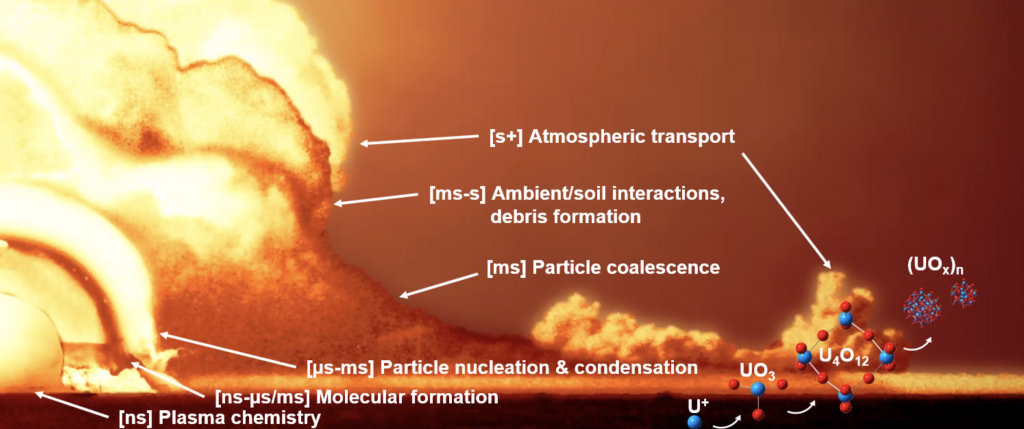 ABSTRACT: Current understanding of metallic chemistry in extreme environments, such as nuclear fireballs, remains limited due to the multitude of physical processes and timescales involved. In particular, many chemical and plasma chemical reaction pathways responsible for forming uranium molecular species remain either unknown or unverified. In recent years, this longstanding knowledge gap has been the target of an increasing number of experimental characterizations, which this work aims to leverage to produce an updated model of uranium oxide (UOx) formation in extreme environments.
ABSTRACT: Current understanding of metallic chemistry in extreme environments, such as nuclear fireballs, remains limited due to the multitude of physical processes and timescales involved. In particular, many chemical and plasma chemical reaction pathways responsible for forming uranium molecular species remain either unknown or unverified. In recent years, this longstanding knowledge gap has been the target of an increasing number of experimental characterizations, which this work aims to leverage to produce an updated model of uranium oxide (UOx) formation in extreme environments.